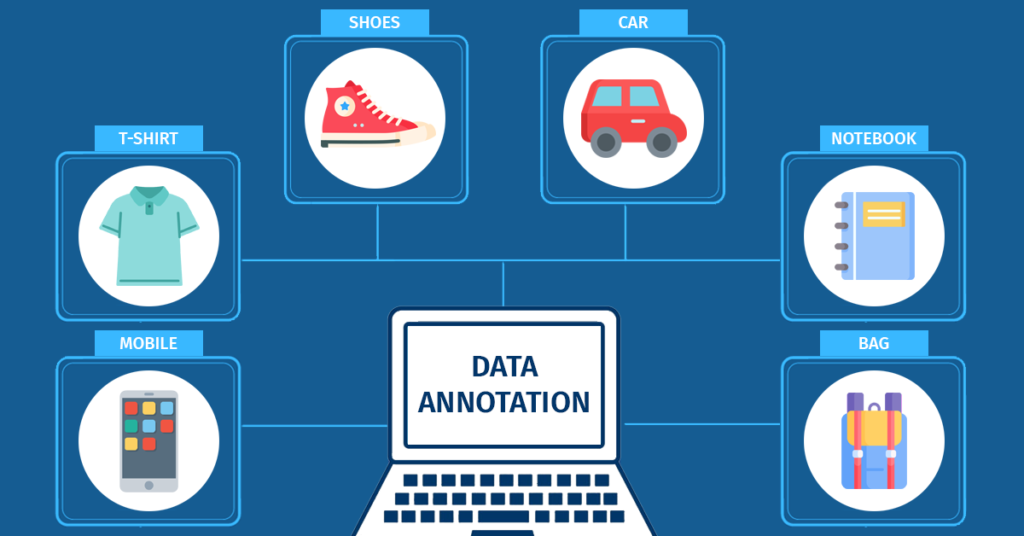Sure! Here are seven blog post titles about data annotation technology

In today’s data-driven world, the way we process and interpret information has transformed dramatically. With machine learning taking center stage in various industries, the backbone of this technology lies in a crucial yet often overlooked element: data annotation technology.
Think of it as the meticulous art of labeling and categorizing vast amounts of raw data to make sense of it all. Whether it’s for training AI models or enhancing user experiences, accurate data is more essential than ever
As businesses seek to harness the power of artificial intelligence, understanding what makes effective data annotation so vital can unlock new opportunities for innovation. Dive into this fascinating realm where cutting-edge techniques meet real-world applications, and discover how mastering data annotation can elevate your organization’s
capabilities to unprecedented heights.
What is Data Annotation Technology?

Data annotation technology refers to the process of labeling data to make it understandable for machine learning algorithms. This involves tagging images, text, audio, and video files with relevant information that helps machines learn from them.
At its core, data transforms raw data into a structured format. For instance, in an image recognition task, annotators might outline objects or label scenes within photographs. This enables AI systems to identify items more accurately.
The rise of artificial intelligence has significantly elevated the demand for efficient data methods. As industries recognize the value of high-quality labeled datasets, innovative tools, and technologies have emerged to streamline this essential process.
From manual efforts to advanced automated solutions like natural language processing and computer vision techniques, each method plays a role in enhancing machine learning outcomes. The effectiveness of these technologies hinges on precise\s that drive smart decision-making across various applications.
The Importance of Accurate Data Annotation in Machine Learning
Accurate data annotation is crucial for the success of machine learning models. It serves as the foundation on which these systems learn and make predictions. When data is incorrectly labeled, it can lead to flawed algorithms.
Machine learning relies heavily on patterns derived from annotated datasets. If the labels are inaccurate, even the most sophisticated algorithms will struggle to deliver reliable results.
This can significantly affect decision-making processes across various industries.
Moreover, precise data enhances model performance by reducing errors during training phases. High-quality s allow models to generalize better when exposed to new data scenarios.
Investing in accurate not only improves outcomes but also saves time and resources in later stages of development. Companies that prioritize this aspect often see a substantial return on investment as their technologies become more robust and effective in real-world applications.
Types of Data Annotation Techniques
Data techniques vary widely, each tailored to specific needs. One common method is image classification. This involves tagging images based on their content, helping machines recognize different objects.
Another technique is object detection. Here, annotators draw bounding boxes around items within an image. This allows algorithms to learn the location and identity of various elements in a visual field.
Text also plays a vital role. It includes sentiment analysis and named entity recognition, where words or phrases are tagged for meaning or context.
Transcription and labeling are key methods for audio data. Annotators convert spoken language into text while identifying speakers or emotions.
Video annotation combines several techniques by marking actions over time frames. With numerous approaches available, businesses can select the right method based on their project requirements.
Challenges and Solutions in Data Annotation
Data annotation faces several challenges that can hinder the accuracy and efficiency of machine learning models. One major issue is the sheer volume of data generated daily. Processing this massive influx requires significant time and resources.
Another challenge lies in maintaining consistency across annotations. Variability among human annotators can lead to discrepancies, impacting model performance.
To combat these problems, businesses are increasingly turning to automation tools powered by artificial intelligence. These tools streamline the annotation process, reducing the burden on human workers while enhancing speed and consistency.
Implementing a robust quality assurance system also helps address inaccuracies. Regular audits and feedback mechanisms ensure that annotations meet high standards over time.
Investing in comprehensive training programs for annotators further enhances their skills, leading to better outcomes. By tackling these challenges head-on, organizations can maximize the potential of data annotation technology in their projects.
Top Companies Using Data Annotation Technology
Several leading companies are harnessing the power of data annotation technology to enhance their AI and machine learning capabilities.
Tech giants like Google and Amazon use advanced annotation techniques for image recognition, natural language processing, and more. Their vast datasets require precise labeling to ensure accuracy in algorithm training.
Startups also join the fray. Companies like Scale AI specialize in providing high-quality annotations for autonomous vehicles and computer vision applications. They cater to a growing demand across various sectors.
Healthcare organizations leverage data annotation for medical imaging analysis. This helps improve diagnostics through better-trained models.
E-commerce platforms tap into data annotation for product categorization and customer behavior analysis. Enhanced recommendations lead to increased sales conversions.
With diverse industries adopting these technologies, it’s clear that effective data annotation is critical in shaping the future of innovation.
How to Choose the Right Data Annotation Tool for Your Business
Choosing the right data annotation tool is crucial for your business’s success. Start by assessing your specific needs. Consider the type of data you work with, whether it’s images, text, or audio.
Next, evaluate features like ease of use and customization options. A user-friendly interface can save time and reduce errors during the process.
Scalability should also be a priority. As your projects grow, ensure that the tool can handle increased workloads without compromising performance.
Check for integration capabilities as well. The best tools seamlessly connect with other software solutions already in use within your organization.
Don’t forget to consider support services too. Responsive customer service can make all the difference when issues arise or if training is needed for new users.
Read reviews and seek recommendations from industry peers to gain insights into their experiences with various tools available on the market today.
The Future of Data Annotation Technology and Its Impact on Industries
The future of data annotation technology is poised to bring transformative changes across various industries. As machine learning continues to evolve, the demand for high-quality annotated data will only increase. Innovations in artificial intelligence and automation are set to enhance efficiency and accuracy in the annotation process.
We can expect more sophisticated tools that leverage deep learning algorithms, significantly reducing manual effort while improving precision. With advancements like these, businesses will not only save time but also decrease operational costs.
Industries such as healthcare, automotive, finance, and retail stand to benefit immensely from improved data annotation techniques. For example, in healthcare, accurate labeling of medical images could lead to earlier diagnoses and better patient outcomes. Similarly, in autonomous vehicles, precise annotations of road conditions are critical for safety.
Moreover, ethical considerations around data usage are prompting a shift towards responsible AI practices. Companies must ensure that their datasets are diverse and representative to avoid biases that can arise from poorly annotated data.
As we move forward into this new era of technology-driven insights and decisions powered by well-annotated datasets, organizations must stay agile. Embracing cutting-edge solutions can help them maintain a competitive edge while navigating the complexities of modern markets.
Data annotation technology is not just an operational necessity; it’s becoming a central pillar supporting innovation across sectors. The potential impact on productivity and decision-making processes cannot be overstated—it’s truly an exciting time ahead for those ready to harness its power.




